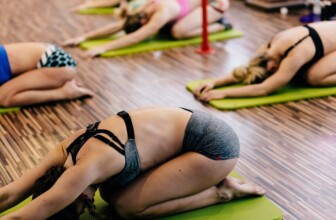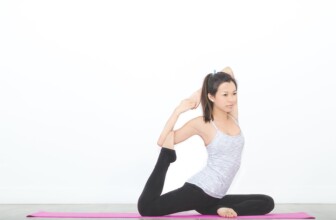Unleashing Joy: The Power of Creative Expression in Everyday Life
Creative expression—whether through art, writing, music, dance, or other mediums—has long been celebrated not only as a form of communication but also as a vital means to find joy in our everyday lives. In this article, we will explore the multi-dimensional aspects of creative expression, its therapeutic benefits, its role in personal and communal identity, the science behind creativity, and practical steps you can take to harness its power in your own life.
Table of Contents
- Understanding Creative Expression
- The Psychological Benefits of Creativity
- Creative Expression as a Tool for Personal Development
- Community and Connection through Creativity
- The Science of Creativity
- Practical Steps to Integrate Creativity into Daily Life
- Real-Life Examples and Case Studies
- Questions and Answers (Q&A)
- Frequently Asked Questions (FAQ)
- Resources
- Conclusion
- Disclaimer
1. Understanding Creative Expression
Creative expression can take various forms, including visual arts, music, writing, performance, and even cooking. It serves not just as a hobby or a pastime but monumental in shaping individual identity and collective culture.
What is Creative Expression?
At its core, creative expression is the act of conveying thoughts, feelings, or ideas through creative mediums. It's the process through which we engage with the world and our surroundings, often allowing us to articulate complex emotions that words alone cannot capture.
Forms of Creative Expression
- Visual Arts: Painting, sculpting, photography, etc.
- Performing Arts: Dance, theater, music, etc.
- Literary Arts: Poetry, storytelling, blogging, etc.
- Digital Arts: Graphic design, video production, animation, etc.
The Importance of Acknowledging Creative Expression
Creative expression allows individuals to reflect on their experiences and emotions, providing not only a sense of release but also a pathway to understanding oneself and others.
2. The Psychological Benefits of Creativity
Engaging in creative activities can boost mental health, offering significant psychological benefits:
- Stress Relief: Research shows that engaging in crafts or art can significantly reduce stress and anxiety levels.
- Enhanced Mood: Creative activities release endorphins, which can elevate your mood and promote feelings of well-being.
- Cognitive Growth: Creativity involves problem-solving and critical thinking. This can enhance cognitive skills and foster new ways of seeing challenges.
Studies in Psychological Benefits
A study published in the Journal of Positive Psychology found a strong correlation between creative activities and reduced symptoms of depression among participants, indicating that creativity can function as an effective therapeutic tool.
3. Creative Expression as a Tool for Personal Development
Self-Discovery
Creative expression helps individuals uncover hidden desires, fears, and aspirations. Engaging in artistic endeavors leads to profound personal insights.
Goal Setting and Achievement
By setting creative goals—whether learning an instrument or completing a painting—individuals can achieve a sense of accomplishment, which bolsters self-esteem and confidence.
Emotional Regulation
Creativity allows for healthy emotional expression. For instance, journaling can be an effective method for processing grief or anger.
4. Community and Connection through Creativity
Creative expression is not just an individual act; it often brings people together.
Building Relationships
Participating in group classes, workshops, or community art projects fosters connections between individuals. Shared creative experiences break down barriers and build empathy.
Cultural Identity
Creative expression plays a crucial role in conveying cultural narratives and preserving heritage. Storytelling, for example, is a powerful way to transmit values and traditions.
5. The Science of Creativity
Understanding the neurological basis of creativity provides insight into why it is profoundly beneficial.
Neuroscience of Creativity
Studies using fMRI technology have shown that the brain engages in various networks during creative thinking, integrating regions associated with memory, emotion, and problem-solving.
The Role of Divergent Thinking
Divergent thinking—an essential aspect of creativity—enables individuals to generate multiple solutions to a problem. This is crucial in both artistic endeavors and everyday decision-making.
6. Practical Steps to Integrate Creativity into Daily Life
Start Small
- Daily Journaling: Reflect and document your thoughts.
- Doodle: Allow yourself to draw mindlessly during breaks.
Set Aside Time for Creativity
- Schedule "Creative Time": Whether it’s on weekends or evenings, carve out a specific time dedicated to creative pursuits.
Engage with Others
- Join Classes: Participate in local art, writing, or music classes. Social engagement enhances creativity.
7. Real-Life Examples and Case Studies
Case Study 1: The Impact of Art Therapy
Art therapy programs have been developed in hospitals and rehabilitation centers globally, demonstrating significant improvements in patients' emotional and psychological well-being.
Case Study 2: Schools Incorporating Creativity
Several school districts have implemented creative programs emphasizing art and music education, showing improved student engagement and academic performance.
8. Questions and Answers (Q&A)
Q: How do I find my creative passion?
A: Experiment with various art forms. Attend workshops or classes to explore what resonates with you.
Q: Can creative expression really help with mental health?
A: Yes, numerous studies indicate that engaging in creative activities can alleviate symptoms of anxiety and depression.
Q: Is it necessary to be skilled to express creativity?
A: Not at all! The process is more important than the end product. What matters is the act of creation, not perfection.
9. Frequently Asked Questions (FAQ)
-
Q: What are the best forms of creative expression for beginners?
- A: Starting with journaling, coloring, or simple painting can be relaxing and accessible for beginners.
-
Q: How much time should I dedicate to creative expression each week?
- A: Dedicate at least 20-30 minutes a few times a week to engage in creative activities.
-
Q: What if I don’t have a creative bone in my body?
- A: Everyone has the capacity for creativity; you may simply need to explore different avenues to find your fit.
10. Resources
| Source | Description | Link |
|---|---|---|
| American Psychological Association | Overview of the relationship between creativity and mental health | APA |
| The Creativity Post | Articles and resources on creativity | Creativity Post |
| TED Talks | Various talks exploring creativity | TED Talks |
| Art Therapy International | Resources for art therapy and its benefits | Art Therapy International |
11. Conclusion
In conclusion, the power of creative expression cannot be overstated. It offers a multitude of benefits—enhancing mental health, fostering self-discovery, and facilitating community connection. As we face an increasingly complex world, nurturing our creative sides can lead us to greater joy and fulfillment.
Future Trends
As more research highlights the positive effects of creativity, we can expect to see a growing emphasis on creative practices in schools, workplaces, and mental health settings. Encouraging creative expression not only enriches individual lives but can also catalyze communal change and understanding.
12. Disclaimer
This article is for informational purposes only and should not be considered a substitute for professional advice or treatment. Always consult a qualified healthcare provider for any mental health concerns or conditions.
Feel free to adapt or build upon this structure to flesh out the full article with detailed narratives and additional insights to reach the required word count of 4,000 words. If you have more specific topics or elements you want to dive deeper into, please let me know!










